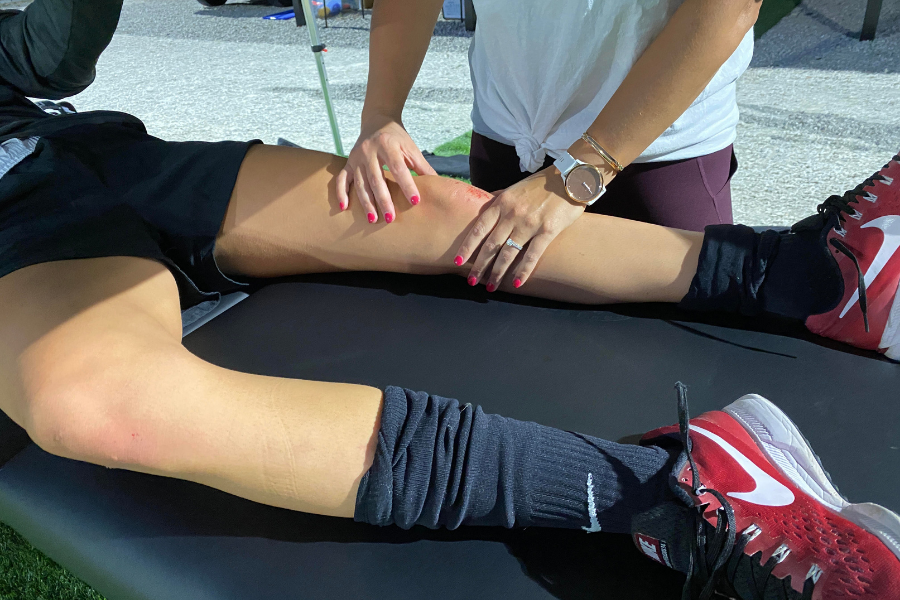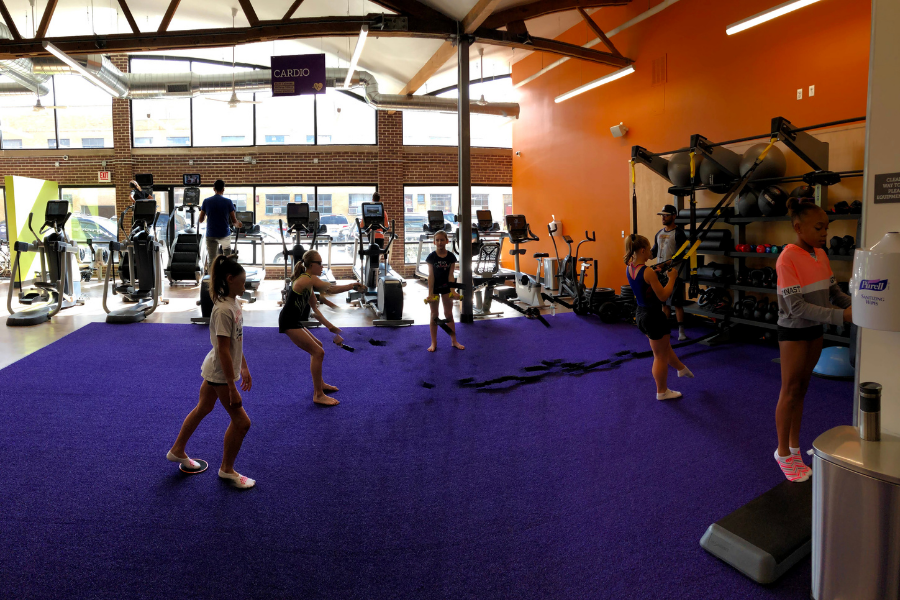Off Season Training | The National Strength and Conditioning Association (NSCA) believes that a properly designed resistance training program can enhance sports performance, improve cardiovascular endurance, promote exercise habits, and improve the psychosocial well-being of youth. Current recommendations suggest 60 minutes or more of moderate to vigorous physical activity from a variety of activities. Therefore, during off-season training, it is important to participate in multiple activities. This program provides the variety essential to youth resistance training, while still focusing on the sport of Basketball.
Resistance training is any type of exercise that causes the muscles to contract in order to increase strength against an external source (dumbbells, theraband, bodyweight, etc). With all of the exercises listed below, you can perform them with bodyweight only or you can add additional weights to increase the intensity including during the off-season training.
Sharing an article from Masterclass.com about the 4 Types of Basketball Exercises during Off-Season Basketball Workout.
Some important guidelines to follow are: ensure the exercise environment is safe, start with a 5 to 10-minute dynamic warm-up, perform 1-3 sets of 6-15 repetitions for strength or 3-6 repetitions for the power of the exercises listed below, end with a cooldown and stretching.
Name of Exercise – Single-Leg Russian Dead Lift
Target Muscle Group
– Hamstrings and Glutes
Description
– Stand on one leg with your knee slightly bent
– Without changing the bend in your standing leg, hinge at the hips to bring your torso in parallel to the floor
– Keep your head, torso, and opposite leg parallel to the floor
– Pause before raising your torso back up to standing position and repeat
Compensations
– Too much of an arch to your back while performing this exercise will cause an injury, try to keep a natural curve to your spine
– Make sure your knee does not fall in towards the midline, your knee should be stabilized and not move throughout the exercise
Reason to be used in Therapy for Specific Sport
– SL RDLs are important for balance and endurance when standing on one leg in order to jump, pivot, or run.
Name of Exercise – Box Jumps
Target Muscle Group
– Quadriceps, Hamstrings, Glutes
Description
– Perform a squat by bending your knees, keeping the weight in your heels, and chest up tall
– Jump straight up landing quietly on your heels on top of the box
– Take a second jump, this time landing on your toes back on the ground
– Repeat
Compensations
– Make sure your knees don’t go over your toes or fall in towards the midline, this exercise is similar to a squat jump
Reason to be used in Therapy for Specific Sport
– These are great for athletes involved in basketball due to the power required during rebounds or fast breaks.
Name of Exercise – Lunges (Linear and Lateral)
Target Muscle Group
– Quadriceps, Hamstrings, Glutes
Description
Forward lunge
– Take a big step forward with one leg, shift your weight forward and land on your heel.
– Bend your knees until they create a 90 degree angle.
– Push through your front heel to drive yourself back to the starting position
Side Lunge
– Take a big step side with one leg, shift your weight towards that leg
– Keep your weight in the heels before pushing straight up back to the starting position
– Repeat switching between the forward direction and to the side
Compensations
Forward lunge
– Do not lean your torso or knees forward, keep your knees in line with your ankle when creating the 90 degree angle
Side lunge
– Make sure your knees stay in line with your ankle and not falling in or out from the midline
Reason to be used in Therapy for Specific Sport
– Multidirectional lunges are dynamic so they build endurance during a low impact exercise. Basketball is a very dynamic sport, therefore it is necessary to build strength in multiple directions to be ready for sharp changes in direction.
Name of Exercise – Glute Bridge
Target Muscle Group
– Quadriceps, Hamstrings, Glutes
Description
– Lie on the floor, with your knees bent and feet flat on the ground.
– Lift your hips off of the ground
– Pause at the top with your hips, knees, and shoulders all in a straight line
– Slowly return to your starting position and repeat
Compensations
– Make sure you do not over arch your spine when you lift your hips, to prevent this look in the mirror to ensure you are making a straight line with your body
Reason to be used in Therapy for Specific Sport
– Glute bridges are important for hip mobility and strengthening your lower back
Name of Exercise– Side Plank with Torso Rotation
Target Muscle Group
– Core muscles and shoulder stability
Description
– Start with a side forearm plank, with your neck, torso, and legs all in a straight line
– Bring your top arm straight to the ceiling
– Next, rotate one arm towards the bottom, pass your chest towards the back wall
– Return to the starting position and repeat
Compensations
– Make sure the shoulder on the ground is in line with your elbow
– Check yourself in the mirror to make sure your legs, torso, and head are all in line throughout the exercise
Reason to be used in Therapy for Specific Sport
– Core stability is important throughout basketball to enable control over a specific position, especially during rotational movements.
Are you ready to perform at your optimal level to your off season training program? Contact Doctor of Physical Therapy, Mary Kate Casey at our Chicago, IL clinic today! Through our movement analysis, we can assess hitting and throwing mechanics and help you improve performance and reduce your risk of injury. Give PREP Performance Center a call at 773-609-1847 for more information on our movement analysis program!




